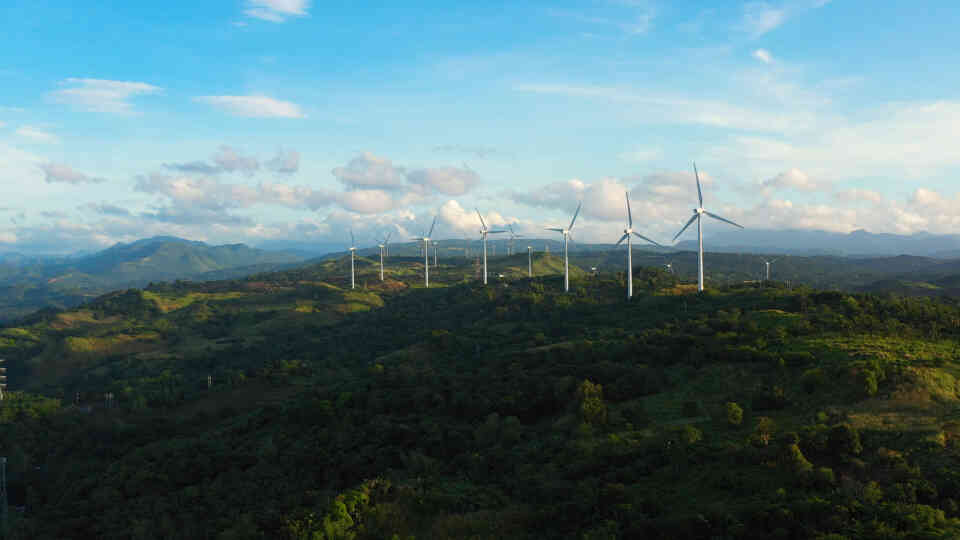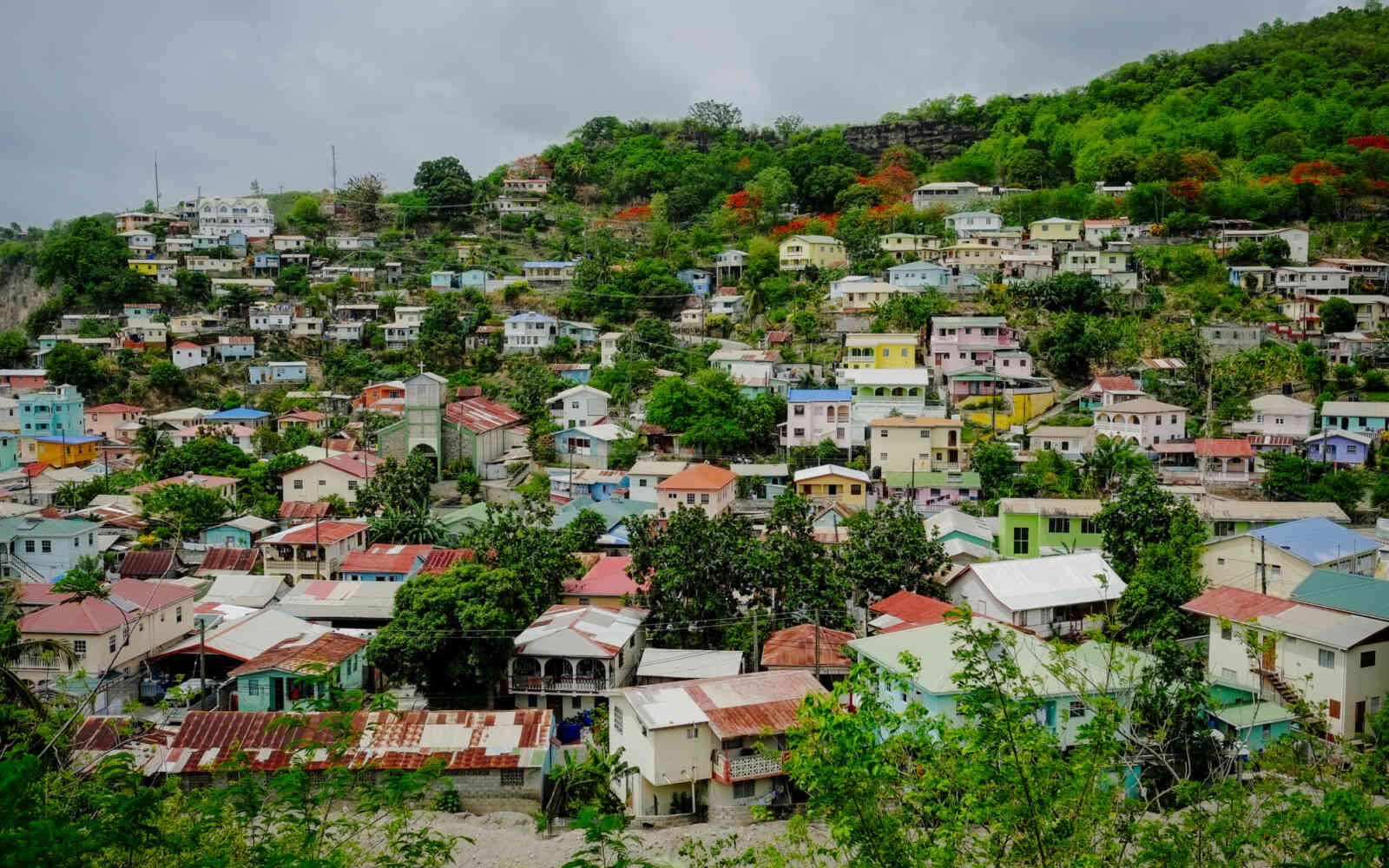The United Nations Office for Project Services (UNOPS)
Leave fossil fuels buried

Energy needs are increasing. How do we ensure they’re met while tackling the climate crisis?
Southeast Asia is home to around 670 million people. Here, economies are growing rapidly and expanding middle classes are moving to urban centres. This growth brings with it both enormous opportunities and enormous challenges. As access to energy and income levels rise, so too does the level of air pollution, hazardous emissions and reliance on fossil fuels, like coal.
We’re at a critical juncture. Sirpa Jarvenpaa, Director of the UNOPS-managed Southeast Asia Energy Transition Partnership (ETP), tells us more.
Q: Energy demand is forecast to grow by an average of 4.7 per cent per year until 2035 across Southeast Asia. How important are these coming years in terms of shifting away from fossil-fuel based energy?
Extremely. Coal is the largest single source of global energy-related CO2 emissions. And in 2018 Southeast Asia was one of few regions where coal use for energy actually increased. If we continue this way, consumption of coal-fired energy will only grow – not just for years, but for decades. That means greenhouse gas emissions will also continue to rise – bringing with it more air pollution, environmental degradation and increases in climate-related disasters, such as devastating typhoons and flooding.
Transitioning to renewable energy – wind and solar power – and phasing out fossil fuel consumption are the most important steps the countries in this region can take to halve the greenhouse gas emissions for limit global warming to 1.5 degrees Celsius, a target we need to stay below to avoid further long term, irreversible damage to our planet.
Q: What’s the first step in transitioning to clean energy across Southeast Asia?
We need to level the playing field. Southeast Asia's overall energy demand has increased by over 80 per cent in the last 20 years – and the energy sector still favours coal and other fossil fuels. This needs to change. First, the true cost of coal – including the health risks and its consequences on our climate and planet – must be fully understood and accounted for.
Q: How do we do this?
One of the first steps is to remove subsidies and other policies that favour coal and other fossil fuels. Through the ETP, we’re helping with this by working with countries to design policy reforms that allow renewable energy to be competitive.
For example, in Viet Nam we’re helping develop technically and financially viable alternatives to coal to meet the rapidly growing energy demands. We highlight the health and environmental benefits, but also the savings from reducing reliance on imported fossil fuels, such as coal – of which imports hit a record high in 2020. These are savings that could then be reinvested in other areas such as education and healthcare, ultimately strengthening development overall.
This is just one part of the puzzle. Transformations on this scale – and at this speed – require decisive action across all areas.
We need to strengthen stakeholder knowledge of energy transition initiatives. We need to develop skills for the workforce to take up the new jobs arising from the energy transition. We need to work together with the leaders and the communities that currently depend on the fossil fuel industry to build capacity. As we increase renewable clean energy in the energy mix, we need to modernize infrastructure for power transmission. In short, energy transition needs everyone’s involvement.
Energy transition is a shift away from fossil fuels to zero-carbon, sustainable, resilient, secure and affordable energy systems. Driven by renewable energy and energy efficiency, energy transitions play a crucial role in building climate resilience – both locally and globally.
Q: Can you expand further on the role of infrastructure?
Without infrastructure upgrades, it’s impossible to integrate a variety of renewable sources into countries’ energy systems effectively. So this is a key focus area for us.
In Indonesia, we’re supporting the upgrade of the central electricity control centre. This is to allow greater volumes of renewable energy – namely, wind and solar – to be channelled through the system, ultimately reaching more communities – especially rural and remote areas. This is a project that has the potential to bring clean energy to millions of people in the Java-Bali region.
In the Philippines, we’re designing a competitive battery energy storage market mechanism. This will reinforce the reliability and security of the country’s grid network, and strengthen its capacity to better integrate renewable energy sources.
Q: What are the key takeaways?
There’s no uniform, one-size-fits-all approach. Not all energy transitions move at an equal pace because not all regions or countries face the same challenges nor the same access to resources, financing and technical expertise. We need to be flexible and work together to break through key barriers that governments and communities are facing – championing frameworks and policies that ensure everyone benefits.
Strong coordination is also key. As the region begins to outline plans for the reduction of greenhouse gas emissions through renewable energy investments, we need to consolidate these commitments and develop innovative partnerships that foster collaboration. By bringing all stakeholders into the discussion, we have an opportunity to take bold steps toward an energy transition that sustains Southeast Asia’s rapid growth without compromising the future of its people.
Sirpa Jarvenpaa
Sirpa Jarvenpaa is the former Director of the Southeast Asia Energy Transition Partnership. An economist from Johns Hopkins University’s Paul Nitze School for Advanced International Studies, she has worked in Southeast Asia for more than 30 years. Prior to ETP, Sirpa had a 20-year career with the Asian Development Bank, where she focused on infrastructure planning, implementation, policy and institutional strengthening- including energy and other infrastructure sectors. She also held roles in strategic planning, resource allocation and mobilization and established the bank’s South Pacific sub-regional office in Fiji.














